We got our first look at the RD-08 in a quick "backstage" demo at the 2024 Winter NAMM Show. As soon as we learned the price ($999.99 at the time of this writing), we knew it would fill a hole in the market and speak to a ton of players looking for quality, yet affordability, in a compact, lightweight stage piano.
Surprise … speakers!
That was in January, and a week or so ago our first batch of RD-08s arrived in time for us to give it a once-over in our own environment. We unboxed it, happily lifted the 29 pound keyboard out of the box (happily because it didn't take an army to get it out of there … we had been building heavy furniture-style digital pianos just days before … ), plugged into some power, and looked for some speakers to connect to. We had polished off a different demo in another room in the office, so speakers weren't where they usually are. But wait … no speakers? No problem! We had forgotten that there are some small, built-in speakers (just 6 watts x 2) on this mini RD, and we decided to forgo hunting for our studio speakers and began taking turns playing.
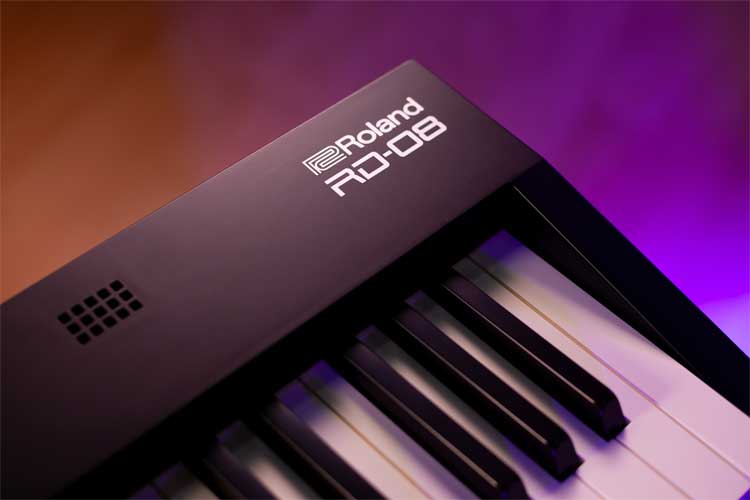
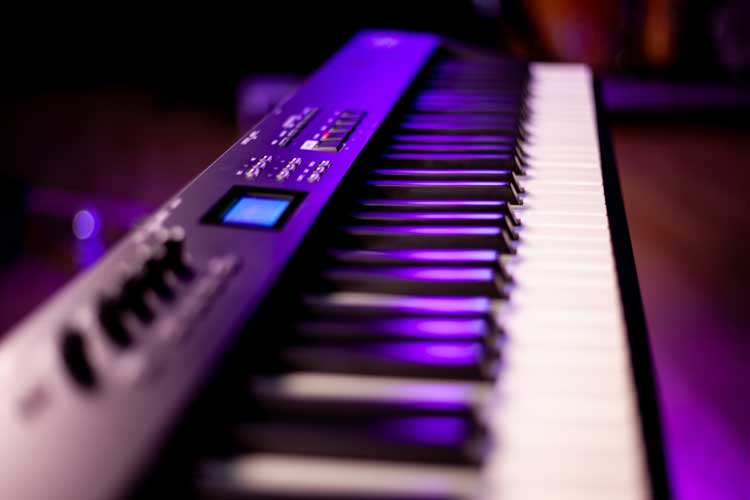
The sound and feel
The studio is about 1,000 square feet with high ceilings and wood floors, and we were surprised by how good this board sounded and how loud it would get. It was completely adequate for us to bang around and audition the sounds. Don't get me wrong, it won't take the place of your P.A., but for situations at home or in the studio, it's a very convenient stereo reference monitor. And with the speakers spread out as far as they could be from one another, it is a true stereo sound.
The keyboard action is Roland's PHA-4 Standard Keyboard, with Escapement and Ivory Feel. 88 keys, of course, and weighted. The feel is good, and familiar, and upon powering up the RD, a great, sampled piano sound greets you. The action is mated to just over 60 preset sounds (Roland calls them "scenes"), and the sound generation includes SuperNATURAL Piano, SuperNATURAL E.Piano, and Roland's ZEN-Core. There are over 3,000 tones available to craft your perfect "scene", but I thought Roland's stab at creating some useful scenes out of the box proved right. Meat and potatoes pianos, electric pianos, piano and string layers, organs, basses, synths, and leads are probably going to get you through 90% of the gig!
As an aside, Roland got this right with the RD-08: as you're moving between pianos and strings to another sound like an electric piano, the sound doesn't abruptly stop upon pressing the button … it instead will sustain the last chosen sound until you lift up from the keys, or lift up from the sustain pedal. Perfect for transitioning while performing.
The control
The beauty of the RD-08, compared to most everything else sub-$1,000, is the user interface along with the available tools for you to be expressive while playing. On center is a helpful LCD display, allowing you to view what you're playing or editing. To the left of that are four control knobs along with corresponding buttons that you'll press in order to select what the control knobs will do. Press "Effects" and the first knob will change "tone color," which is a stereo spectrum setting. Turning to the right widens the sound. The third knob adjusts a delay or chorus, and the fourth knob adjusts the reverb setting up or down. Press the EQ button, and the three knobs on the right act as a bass, mid and treble EQ setting adjustment. It's all very fast and easy, and begs you to shape your tone in real time in order to get you to the point where you've made the sound yours.
The neat thing is that all of those settings, including your tone choices, can be saved as a scene for easy recall. And while these knobs and buttons give you real-time control, there is a "panel lock" function that you can turn on so you or someone else doesn't make changes while you're on stage.
Back to the panel … to the right of the display are your navigation buttons: decrement and increment buttons, up, down, right, left, Exit, and Enter. Want to audition all of the Piano sounds available? Pretty easy – press Piano, and use the INC button to advance to the next tone.
There are dedicated Piano, E.Piano, Organ, Synth, and Other buttons, and pressing any of them will get you to a default tone that resembles the name. Other can be bass sounds, or whatever you decide should live there.
Just above the big tone buttons are buttons used for getting to the Menu, Favorites, Song Play, Metronome, and a handy Speaker On button that allows you to listen through the on-board speakers while you have the RD plugged into a separate sound system. Oh, and I can't forget that there are two wheels on the far left of the instrument, typically used for pitch and modulation along with rotary speaker simulation when playing the organ sounds.
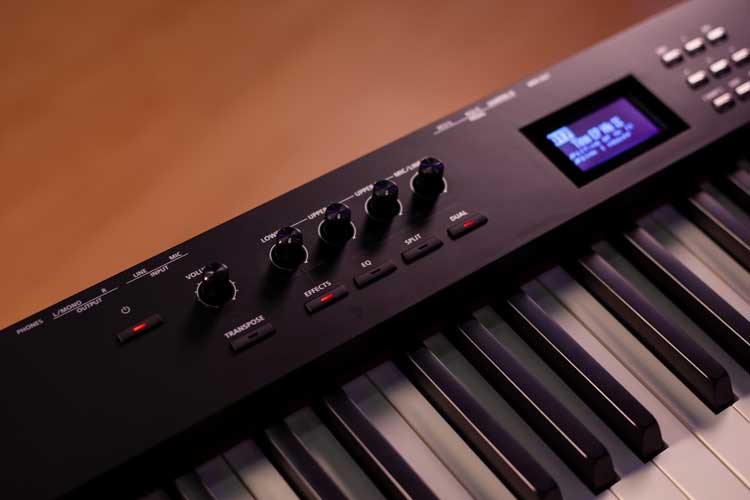

Inputs and outputs
The rear panel of the RD continues to show its stage/performance roots. In addition to the standard headphone jack, there are left and right 1/4" outputs, line and mic inputs (very cool!), three pedal inputs for sustain, volume, expression, and more, MIDI out, and USB connectors to go to the computer or for flash memory.
It all comes together
That's a lot of stuff! But here's how it works in practice: Turn it on and play the Concert Grand. Nice, but maybe your ears could use some more reverb: Press the Effects button, rotate knob 4, done. More bass and treble? Press EQ, make your adjustments. Perfect. OK, next tune calls for a '70s electric piano along with a bit of strings in the background. Press E.Piano, press INC a few times until you get the tone that you want, and you're ready for the tune. Need more strings on that layer? Press Dual, and the knobs allow you to add more strings or cut them out entirely. Next tune calls for a jazz organ … again, no problem. Press Organ and use Wheel 2 to bring in a rotary speaker effect.
The point is that for so much of what you might need for your keyboard part, the RD-08 has the basics right there at your fingertips, and the results are musical and professional.
Frankly, while we see the RD-08 used on stage, it's also perfect in a studio (home or pro), and with or without a computer. When you factor in the price, size, and weight, it makes for a compelling first or second keyboard. Why drag the expensive, heavier instrument to a stage when the RD-08 will slip in and out of your car with ease? Or, thinking of adding a keyboard to the home studio with the the added benefit that you could take it out if you need to? The RD-08 is the answer.
The RD-08 – The magic is that it is so lightweight and affordable, has Roland quality tones, but still contains tactile features like control knobs and multiple pedal inputs, all the while having a full 88-note weighted keyboard that's fun to play.

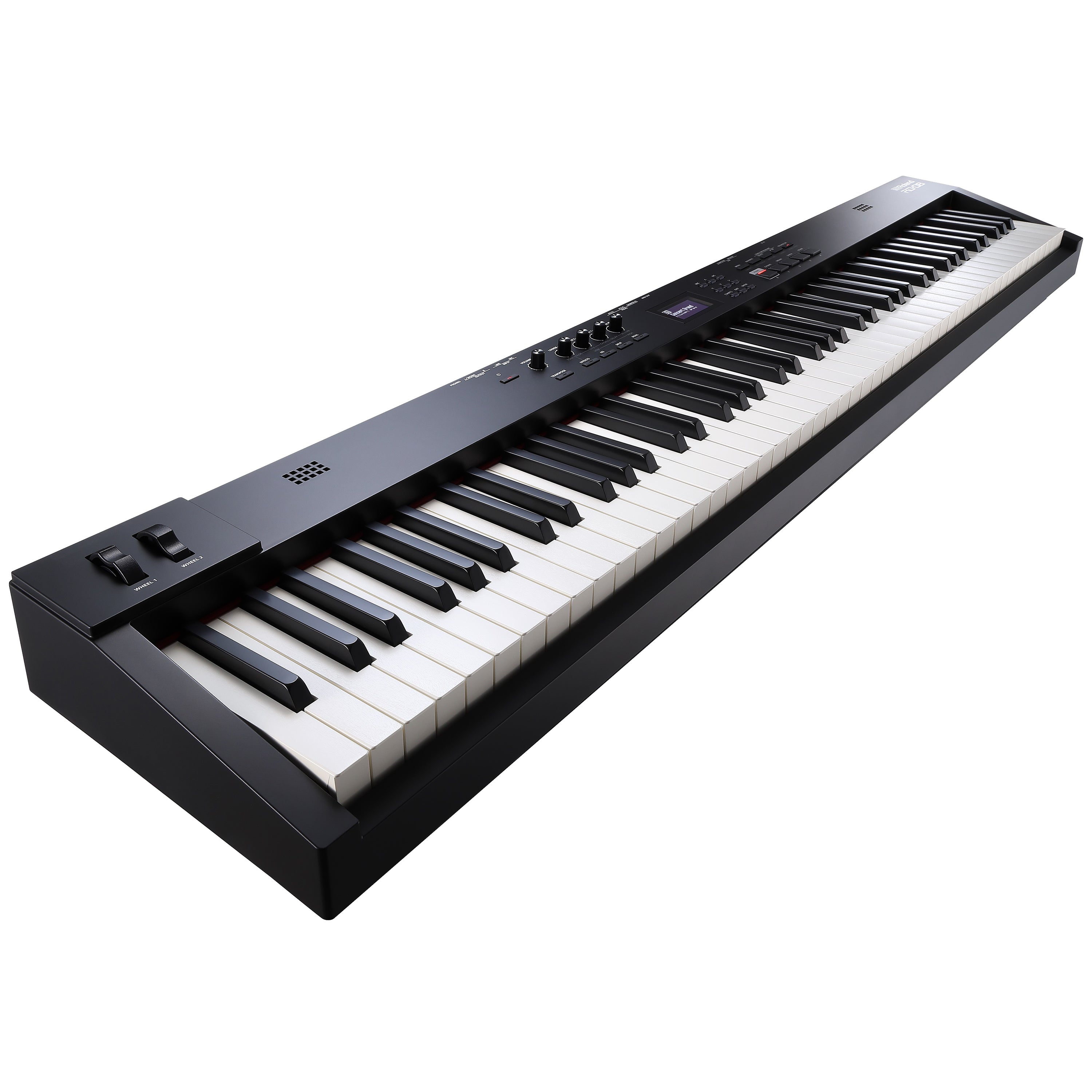
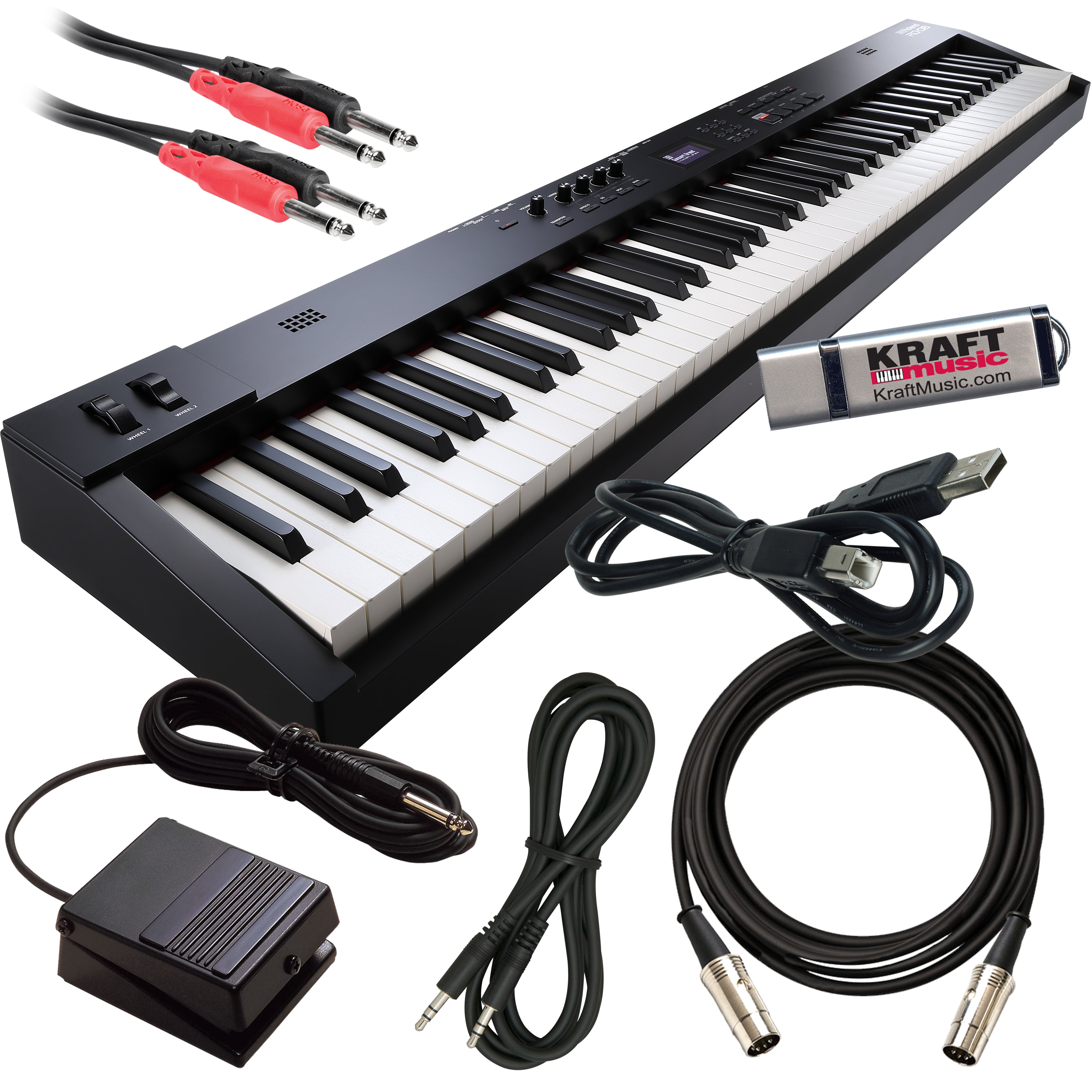
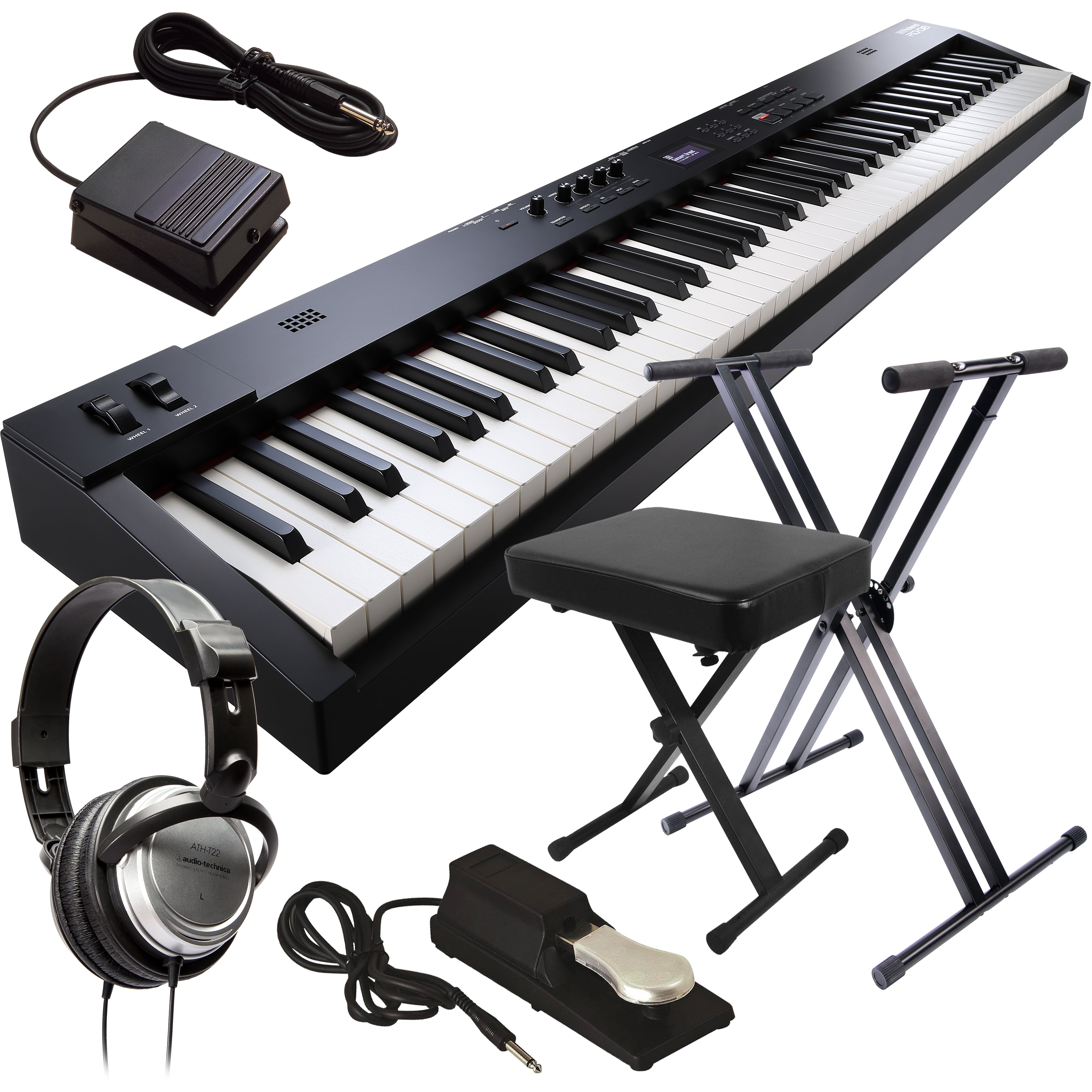
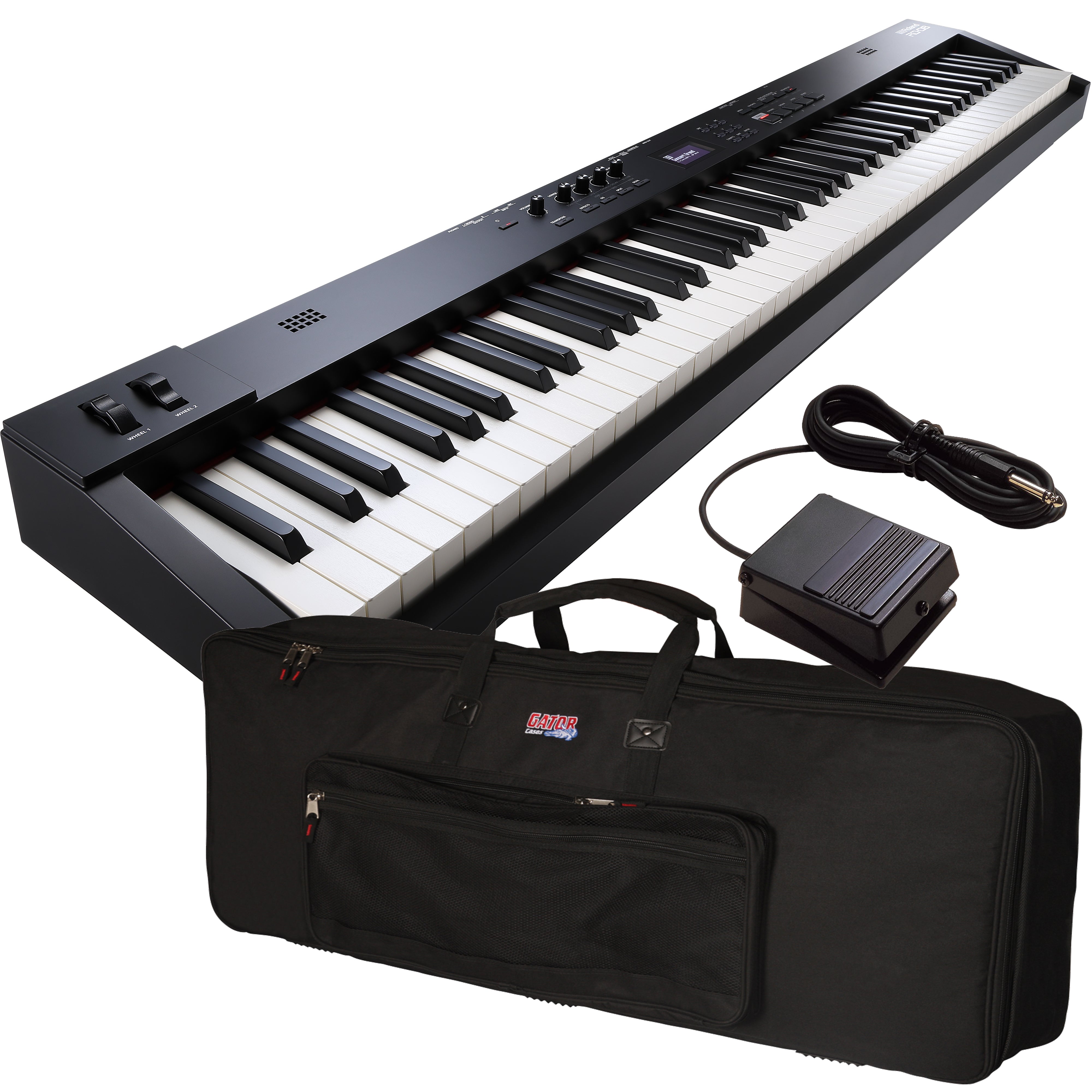
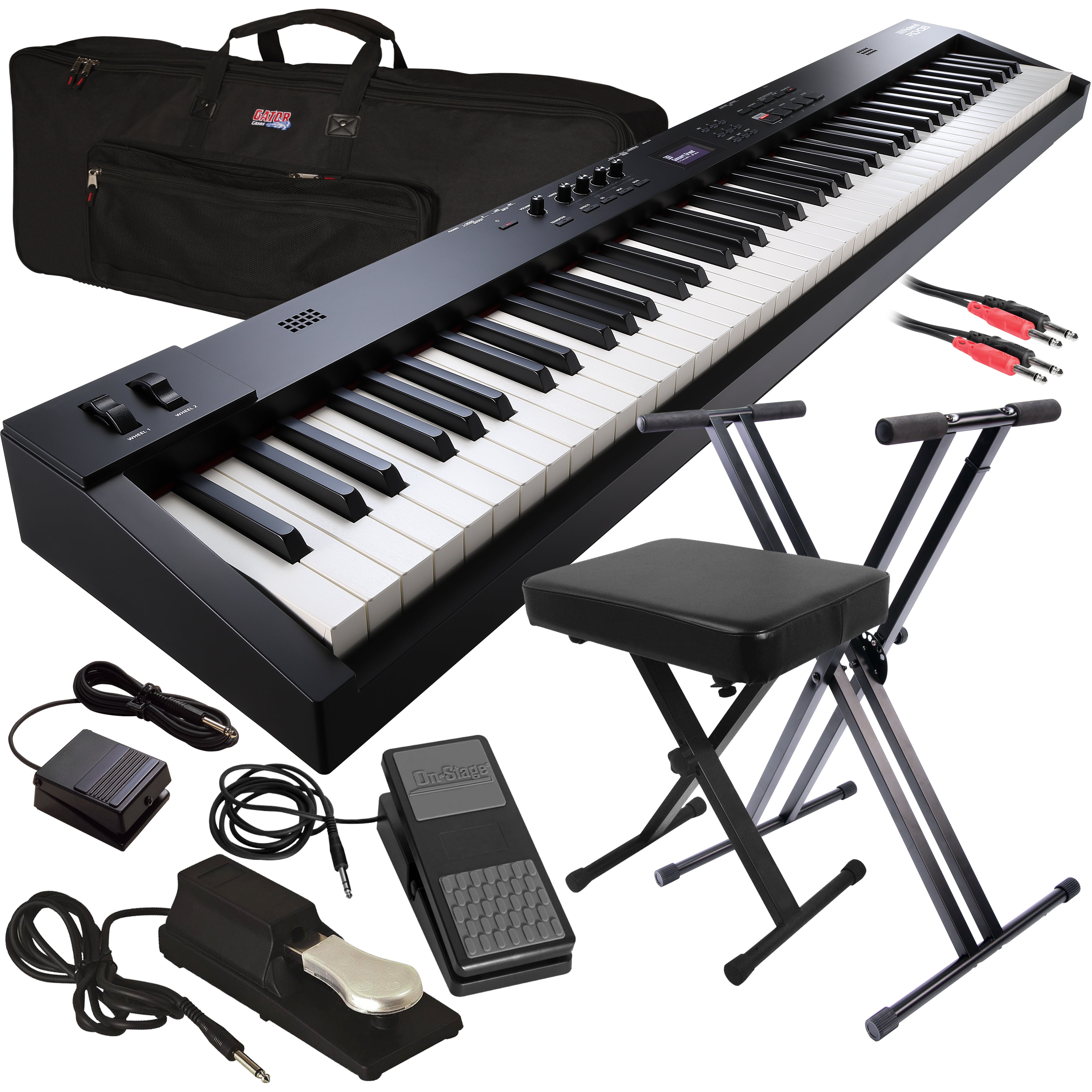
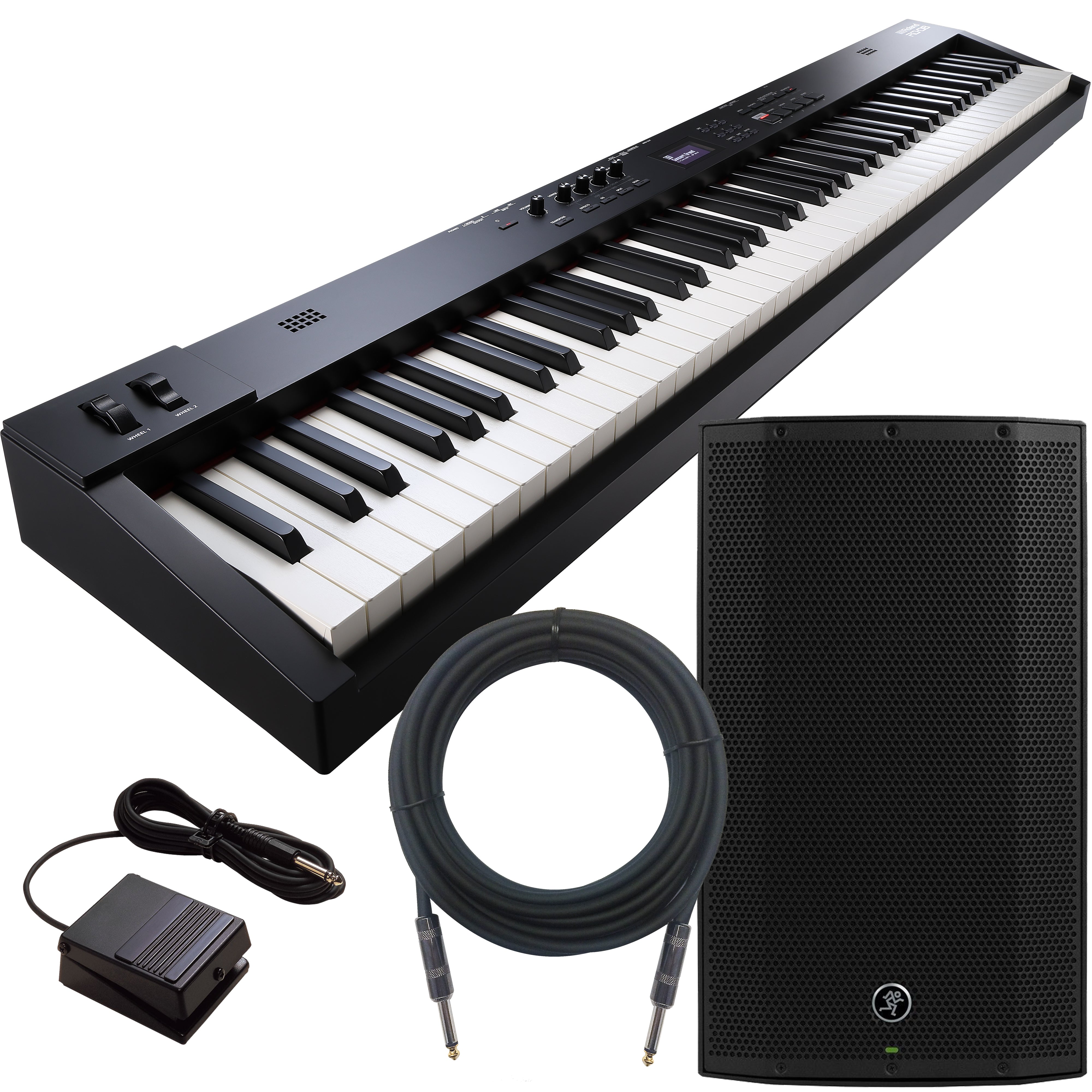

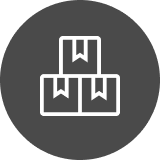




YOUR MUSIC TECHNOLOGY STORE SINCE 1984